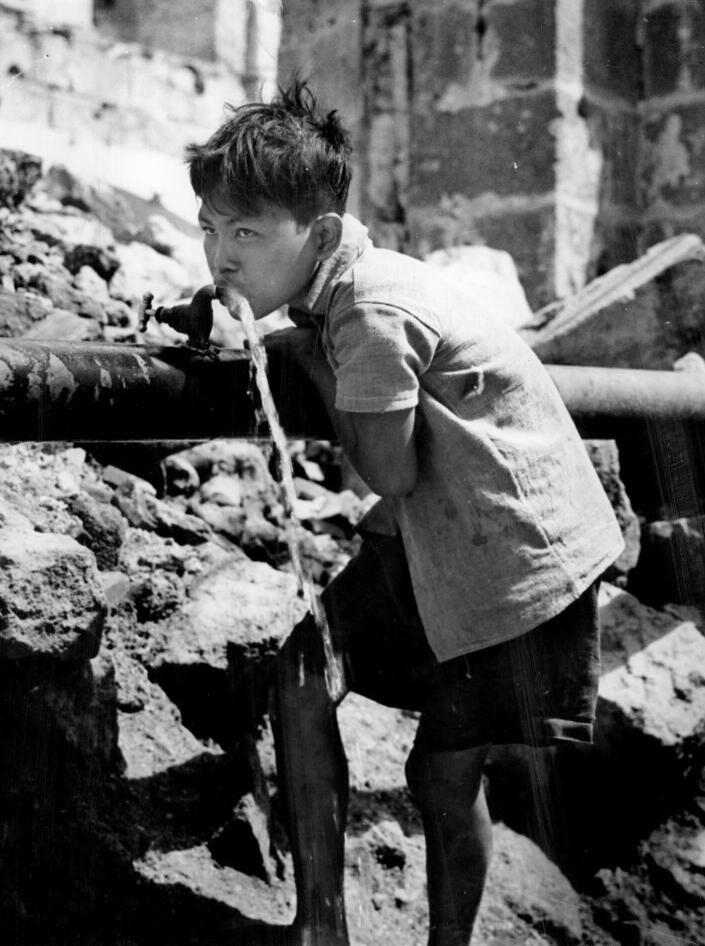
Figure 1.--Manila and other Filipino cities were left without the most basic facilities. This boy is drinking water from an emergency pipeline set up by the U.S. Army. |

|
As the Americans reached the Pasig River, fighting flared throughout the city. It would last a month. The bsattle for Msamilsa degeneraed into a series of bloody street engagements fought house-to-house. General MacArthur with his long history in the Philippines wanted save Manila from a destructive campaign. He restrictions U.S. artillery and air craft fire. Admiral Iwabachi placed no restrictions on his fighters. Most saw surrender as shameful. They decided to die for the Emperor and to take as many American soldiers and Filipino civilians with them as possible. They proceeded to kill Fiipinos indesvrinately. A month of fighting left Manila almost totally destroyed and a virtual wasteland.
The first major engagement to punch through the outer defenses was at Quezon Bridge. General Griswold ordered advance elements of XIV Corps to proceed from Santo Tomas University toward the Pasig River. He odered the 2d Squadron, 5th Cavalry to seize the only remaining bridge still standing--the Quezon Bridge (February 4). The Japanese knew this was coming and were prepared. As the troopers nearted the bridge, the Japanese opened up with heavy machine guns placed in a roadblock thrown up across Quezon Boulevard. The Japanese had hammered steel stakes into the pavement, plsaced mines everwher and lined up old truck bodies across the road. The trropers were forced to withdrew under cover of nightfall. The Japanese then blew the bridge. The 37th Division entered Manila (February 5). Griswold divided the northern part of the city into two sectors. The 37th Division was assigned the western sector. The 1st Cavalry was given the eastern sector. The 37th had cleared their sector, but it was badly danaged (February 8). The Japanese added to the destruction caused by the fighting by demolishing buildings and what remained of military installations as they withdrew. The Division lost many men as a result of fighting on Provisor Island. This was an industrial complex on the Pasig River. The Japanese garrison there, estimated at less than a battalion, held off the Dvision (until February 11). The 1st Cavalry Division had an easier time in the eastern sector. The 7th and 8th Cavalry had the harfestv time in pitched battles near two water supply installations north of the city, The 1st Calvalry crossed the Pasig River and has a bridgehead on the oter side (February 10). The final battle to punch through the outer defenses came in the south. The 11th Airborne Division was placed under control of XIV Corps (February 10). The division had been stopped at Nichols Field (February 4). And since that time has beenb assaulting entrenched Japanese units supported by concealed artillery. The paratroopers took Nichols Field (Februyary 11). This completed the American encirclement of Manila (February 12). [U.S. Army, pp. 15-17.]
With their outer defenses punctured, the Japanese defense lost any effective central control as command andf control failed. The Americans aided by Filipino irregulars moved street by street through wehat remained of Manila. General Yamashita did not learn of the bsattle for Manila (until about February 17). By this tome it was impossible to order the scattered and cut off small units to stop fighting. The Japanese made The final weeks of fighting bloody, refusing to surender. The final engsagement was fought over the giant Finance Building dominsating the center of the city. Genertal Griswold finally reported that enemy resistance had ceased. Manila was finally liberated. But it had also been destroyed.
U.S. Army. "Luzon 1944-1945" The U.S. Army Campaigns of World War II CMH Pub 72-28.
Navigate the CIH World War II Sectione:
[Return to the Battle for Manila page]
[Return to the Main Liberating Luzon page]
[Return to the Main Liberation of the Philippines page]
[Return to the Main Philippines World War II page]
[Return to Main World War II Pacific campaign page]
[About Us]
[Biographies]
[Campaigns]
[Children]
[Countries]
[Deciding factors]
[Diplomacy]
[Geo-political crisis]
[Economics]
[Home front]
[Intelligence]
[Resistance]
[Race]
[Refugees]
[Technology]
[Bibliographies]
[Contributions]
[FAQs]
[Images]
[Links]
[Registration]
[Tools]
[Return to the Main World War II page]
